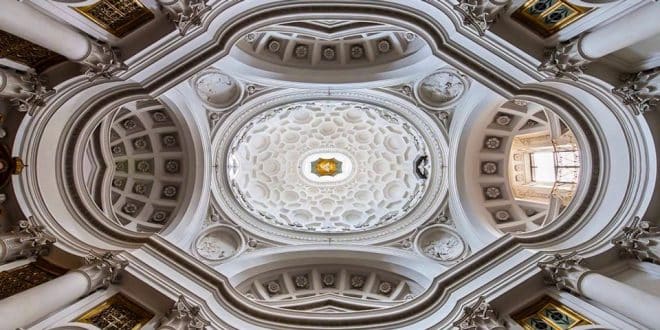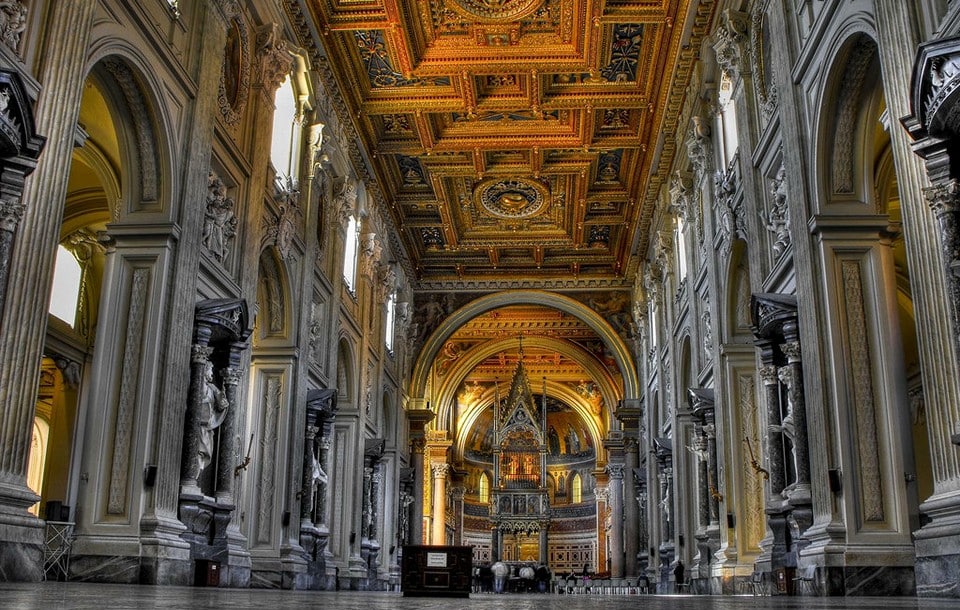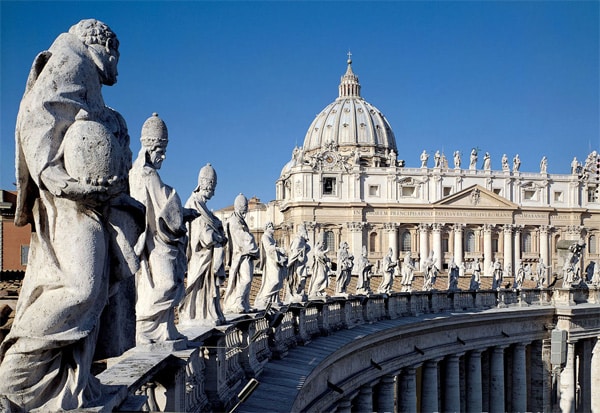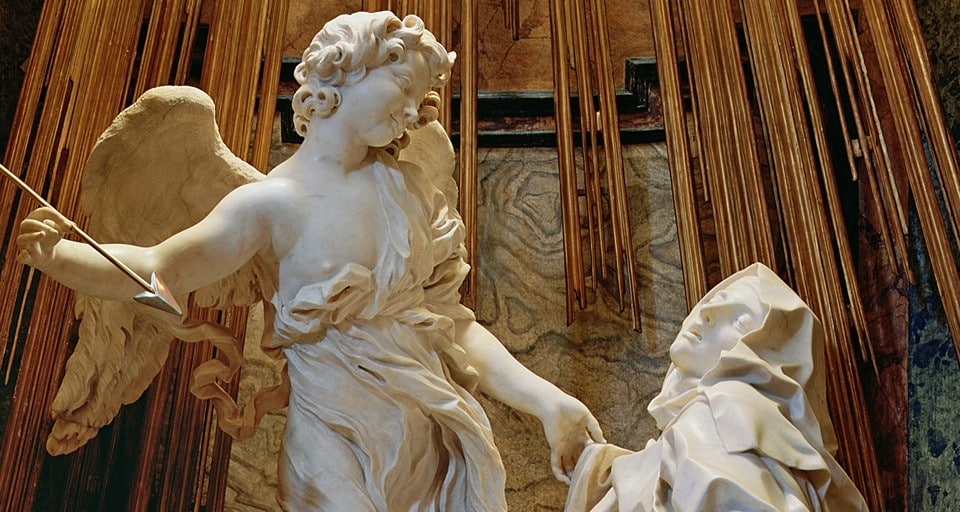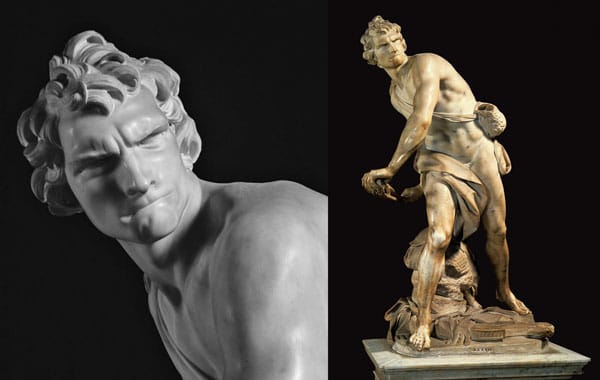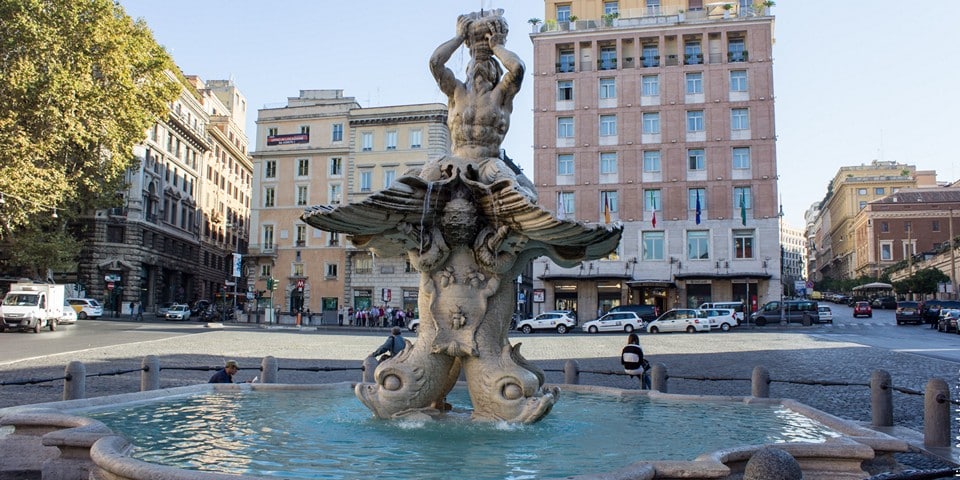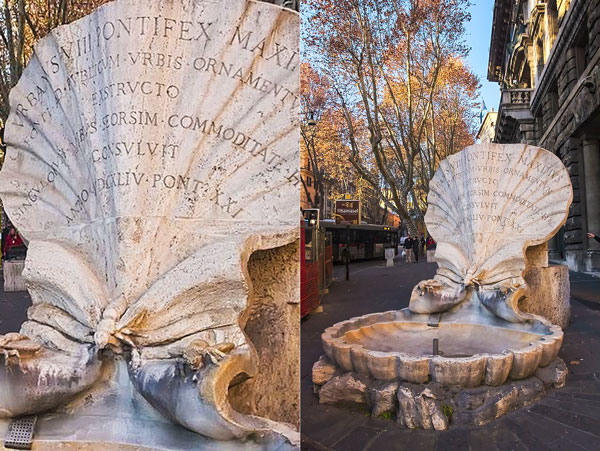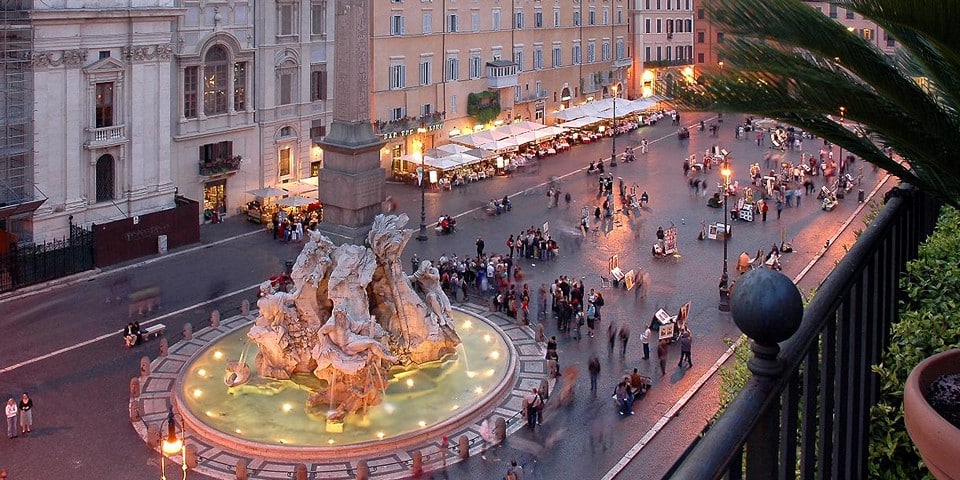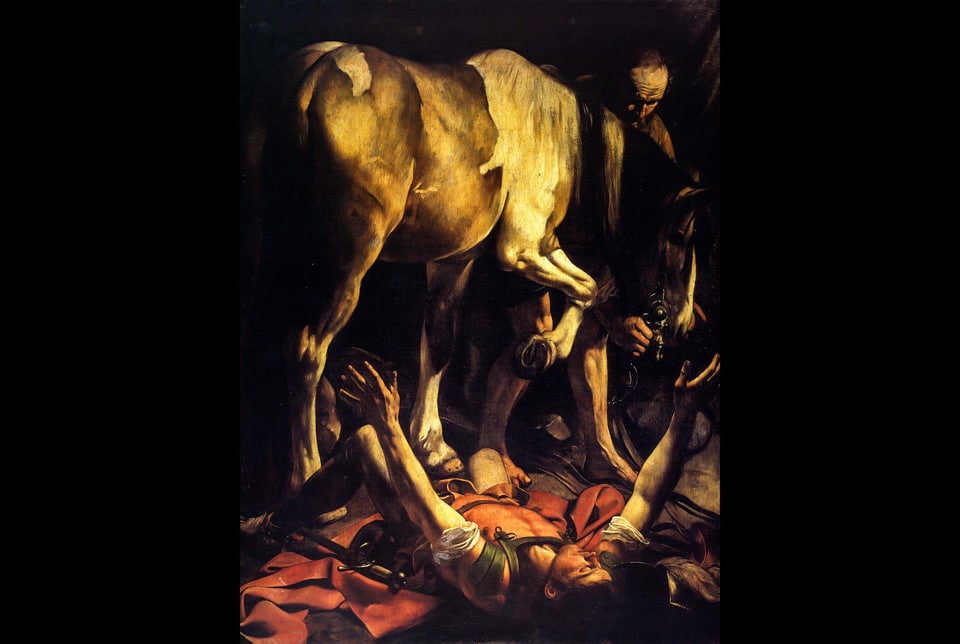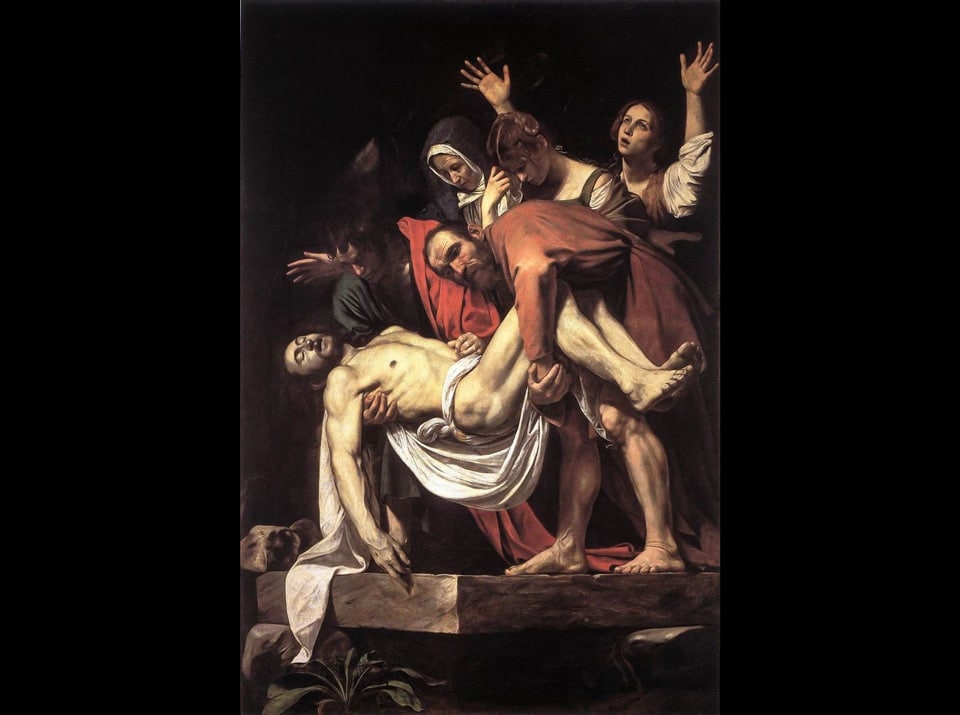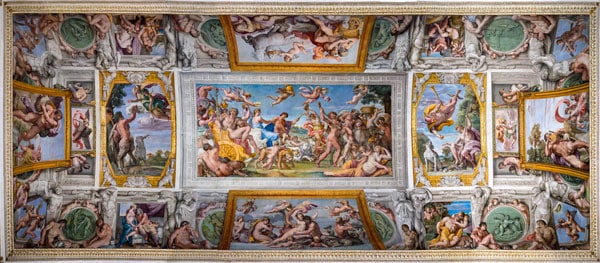At the end of the 16th century, a new cultural epoch began in Rome (Roma), often confined to the concept of “artistic style.” Succeeding the Late Renaissance, Baroque (barocco) in Italy spans the late 16th to the early 18th century.
The variety of genres, regional schools, and artists’ associations make it difficult for art historians to accurately assess the era. Proponents of the style believe that the exquisite plasticity strives for beauty, continuing the traditions of the Renaissance and Mannerism.
Opponents are convinced that baroque is a tasteless, crisis stage of artistic development. Emanuele Tesauro (Emanuele Tesauro), a 17th-century Italian philosopher, knew the approach to solving the problem. He asserted: to understand Baroque art requires a “sharp mind,” a special way of thinking: the ability to perceive metaphors and allegory, and the skill to quickly penetrate the essence of the Master’s ideas.
Page Contents
Meaning of the Term “Baroque”
- The name refers to figurative art
- A sarcastic mockery, negative meaning: absurd, strange, “quirky”
- Barroco (French) – poor, affected, unnatural taste
- Perola barroca (Portuguese) – an irregular pearl without an axis of rotation (a term used by jewelers)
- Barocco (Italian) – a sophistry technique; a form of logic leading to absurdity
- Bis-roca (Latin) – a stone of twisted form. It is a precious mineral, but with a defect. Imitation of beauty
- Barocco (Italian) – the term is associated with the name of the leading artist of early Baroque
- Federico Barocci (Federico Barocci) – a major Italian painter and graphic artist of the late Mannerism and early Baroque periods.
- Borrowing from the architecture of Central Asian Turks (Seljuks)
Rome – The Birthplace of Baroque
Rome was the center of the development of this new art style. The capital of the Catholic world retained the experience of the Renaissance. Michelangelo Buonarroti (Michelangelo di Lodovico Buonarroti) is often called the “father” of Italian Baroque. The major Renaissance master developed new compositional forms for Pope Clement VII’s library (1523 − 1534) – the architectural structure is considered the prototype for all buildings in the Baroque style.
The Role of the Church. Counter-Reformation
Classical art historian Giulio Carlo Argan (Italy) called the Italian Baroque era “a cultural revolution in the glory of Catholic ideology.” In response to the Protestant Reformation, Catholics began a church-political movement – the Counter-Reformation.
The main goal of the reform was to renew the Roman Catholic Church and restore its prestige.
Only art could visually represent power and might, using which one could astonish, attract attention, and generate interest. Protestant churches were contrasted with richly adorned Catholic temples decorated with gold, ornamentation, and majestic staircases. St. Peter’s Basilica (Basilica Sancti Petri) in the Vatican is an example of the new style. The prototype for Baroque churches in Italy is the Roman Il Gesù Church (Chiesa del Sacro Nome di Gesu), designed by Giacomo da Vignola (Il Vignola).
The Development of the Style
Baroque masters deviated from the artistic traditions of the Renaissance. The development of art occurred in two periods:
- Early Baroque. Time frame: late 16th – early 17th centuries.
- Mature Baroque: 1630s – early 18th century.
Early Baroque developed unevenly, depending on local features. The characteristics of the style were created in architecture and painting. The cradle of the Renaissance – Florence (Firenze) – remained indifferent to the new art form. Rome (Roma) spared no expense on the reconstruction of the city.
Venice (Venezia), Turin (Torino), Genoa (Genova) gave their architectural structures a refined and festive appearance. Renowned early Baroque representatives: Giacomo Barozzi da Vignola (Il Vignola, 1507 − 1573), Giacomo della Porta (Giacomo della Porta, 1533 − 1602), Domenico Fontana (Domenico Fontana, 1543 − 1607), Michelangelo Merisi da Caravaggio (Michelangelo Merisi da Caravaggio, 1571 − 1610).
Mature Baroque began after 1630, with sculpture becoming the dominant art form. This period is characterized by an enhancement in the grandeur of architecture. New forms appeared, including sculpture-decorated fountains, grottos, and balustrades. The cult architecture of late Baroque was represented by experienced masters such as Giovanni Lorenzo Bernini (Giovanni Lorenzo Bernini, 1598 − 1680), Guarino Guarini (Guarino Guarini, 1624 − 1683), and Carlo Rainaldi (Carlo Rainaldi, 1611 − 1691).
Characteristics of the Baroque Style
The emergence of the new artistic style cannot be explained solely by the influence of the Catholic Church. The cultural epoch is associated with the crumbling of humanist ideals, a new understanding of human nature, and a change in the “worldview” at the turn of the 16th to 17th centuries. Baroque art inherited grandeur and solidity from the Renaissance and deep emotionality and dynamism from Mannerism.
Characteristic features of the style in architecture include:
- Monumentality;
- Spaciousness;
- Complex curvilinear plans;
- Use of chiaroscuro, colonnades, and domes;
- Massive ceremonial staircases;
- Emphasized grandeur of churches;
- Magnificence.
Italian Baroque Sculpture
New architectural elements emerged after the merger of architecture and sculpture: the statue of Atlas (telamon), the column in the form of a female figure (caryatid), the sculptural decoration of macarons, and obelisks. The most famous sculptor of the period is Giovanni Lorenzo Bernini (Giovanni Lorenzo Bernini). His best work is the sculptural group “The Ecstasy of Saint Teresa” (Estasi di Santa Teresa d’Avila).
Characteristic features of the style include:
- Theatricality;
- Depiction of groups of human figures in dynamic motion;
- Use of white marble;
- Ability to view sculptures from multiple angles;
- Integration of sculpture with painting and architecture;
- Abundance of sculptural figures on façades and in palace park areas.
Italian Painting
Italian painting of the 17th century began to lose its exclusive position in Europe. Architectural art remained avant-garde for the era. Art historians categorize Baroque painting into three types: ecclesiastical, courtly, and bourgeois. New genres utilized mythological and religious themes and focused on real life.
Features of Baroque painting include:
- Dynamism in compositions;
- Uncommonness of subjects;
- Dramatic conflict;
- Use of allegory;
- Contrast in color, shadow, and scale;
- Ceremonial portraits creating an illusion of emotional contact;
- Opulence of forms.
The Person of the Baroque Era
The Renaissance view of humanity changed during the Baroque period. Italian culture of the new era portrayed humans as mere specks in the grandeur of nature. God was seen as the Great Architect. People were expected to learn from this higher wisdom.
Baroque in Art
Contemporary art history views Italian Baroque as an artistic era that began the movement of Western civilization toward triumph.
Baroque Architecture
Francesco Borromini (1599 − 1667)
Working with Lorenzo Bernini, Borromini was involved in the project of the 29-meter baldachin in Saint Peter’s Basilica (Basilica di San Pietro) in the Vatican (Stato della Citta del Vaticano). Twisted columns decorated with laurel branches. Four statues of the church fathers support Saint Peter’s chair. The baldachin is covered with bronze taken from the Pantheon. Borromini’s fiery and impetuous nature remained overshadowed, with the fame going to his rival, Lorenzo Bernini.
In the basilica’s history, the high bronze grille for the Chapel of the Holy Communion, designed by Borromini in 1630, is notable.
The outstanding architect participated in reconstructing the Cathedral of Saint John the Baptist on the Lateran Hill (Basilica di San Giovanni in Laterano).
Over four years (1646 − 1650), he enriched the basilica with elements of Baroque architecture, designed the niches of the main nave, and created sketches of statues of saints and prophets. The author of grandiose palace projects directed the construction of Palazzo Barberini (1629 − 1633) in Rome.
The snail-shaped spiral staircase, double columns, and whimsical details glorified the might of Maffeo Barberini, who was elected as Pope in 1623 (Urban VIII).
Recommended reading: Barberini Square (Piazza Barberini)
Filippo Juvarra (1678 − 1736)
Filippo Juvarra, a renowned Roman architect and a prominent figure of the late Baroque period, was known for constructing churches and palaces in Italy and designing the Royal Palace in Madrid (Palacio Real de Madrid).
Juvarra’s work was greatly inspired by Francesco Borromini’s Baroque innovations. In 1732, he created the dome for the Church of Sant’Andrea in Mantua (Basilica di Sant’Andrea). His notable constructions in Turin include the Palazzo Madama (1721) and the elegant hunting lodge for the Savoy royal family, Palazzina di caccia di Stupinigi. His most important buildings are the Basilica of Superga (Basilica di Superga) and the Palazzo Birago di Borgaro.
Filippo Juvarra’s architectural style is celebrated for its grandiosity and ingenuity, blending the traditional with the innovative, and his works remain significant landmarks in Italian architecture.
Basilica of Superga
Construction of the lavish Catholic Basilica of Superga began in 1717.
Filippo Juvarra, the Baroque architect, erected a temple that became known as “the rival of the colossal cathedral of Saints Peter and Paul in Rome” (M.N. Zagorskin).
Palazzo Birago di Borgaro
1716 Count Renato Augusto Birago di Borgaro commissioned Juvarra to build a palace in Turin. Notable features of the building include a grand staircase, numerous columns, a main hall decorated with statues for formal receptions and balls, and alternating curved and triangular pediments on the windows.
Pirro Ligorio (Pirro Ligorio)
Pirro Ligorio, a distinguished artist of the Italian Baroque era, antiquarian, and engineer, served as the architect of the papal court under Pope Pius IV (1559 − 1565). After facing criticism for his views on Michelangelo Buonarroti’s St. Peter’s Basilica design, Ligorio lost his prestigious position and returned to work for Ippolito II d’Este (Ippolito II d’Este).
In 1567, commissioned by the cardinal, Ligorio began designing the fountains and park of the Villa d’Este in Tivoli. He constructed the garden to reflect the symbolism associated with the d’Este dynasty, linked to their ancestor Hercules. The villa is surrounded by forty-two water features, creating the “Bollente Staircase.”
His monumental work, “The Avenue of a Hundred Fountains,” was designed based on the theme of Ovid’s “Metamorphoses.” The “Organ Fountain” particularly amazed contemporaries; when water entered its vaulted chamber, it forced air through organ pipes, producing musical sounds. After extensive restoration of the landscape architecture crafted by Pirro Ligorio, the site was named the most beautiful park in Europe in 2007.
Baroque Sculpture
During the Baroque era, sculpture was closely linked with painting and architecture. Sculptors abandoned the concept of plastic tranquility, evolving their techniques. Giovanni Lorenzo Bernini is acclaimed as the most famous sculptor of Italian Baroque, often referred to by art historians as “the Michelangelo of the 17th century.”
Giovanni Lorenzo Bernini
The founder of the Baroque style in sculpture, Bernini devoted 50 years of his creative life to embellishing St. Peter’s Basilica in the Vatican.
In creating statues with religious themes, Bernini, the principal architect of the Basilica (since 1629), used white marble and concealed lighting to enhance the spiritual atmosphere of the services.
In Bernini’s hands, the hard, lustrous stone became pliable and responsive. His sculptures “came to life,” conveying the curves and warmth of the human body.
A classic example is his work “The Ecstasy of Saint Teresa” (1645 − 1652).
Art historian Ernst Gombrich (1909 − 2001) assessed the piece created for the Roman Church of Santa Maria della Vittoria (Santa Maria della Vittoria): “The Baroque sculptor took religious feeling to a frenzy. Lorenzo Bernini escalates emotions to an extreme and does not fear crossing the line of the permissible. Such an image had never been seen before in art history.”
David
In his sculpture of “David” (1623), Bernini approaches classical subjects but creates images in his distinctive style. Bernini’s David is unlike the heroes depicted by Michelangelo Buonarroti and Donatello.
Bernini is interested in realistically depicting the killing of Goliath. The young David’s lips are tightly pursed, his small eyes filled with anger, and his facial expression clearly reveals his intent. The dynamic figure invites the viewer to imagine the trajectory of the stone’s throw.
Recommended reading: Michelangelo’s Statue of David in Florence
Roman Fountains
Bernini’s creations are masterpieces of allegory and spectacle. Pope Urban VIII commissioned his majestic fountains in Rome with narrative themes.
Fontana del Tritone
Bernini completed the Fountain of Triton (Fontana del Tritone) in 1642.
The base, made of travertine, is formed by sculptures of four dolphins, between which is the coat of arms of the Pope. In a large shell set on the tails of the sea creatures, there is a statue of Triton, son of Poseidon, blowing a jet of water from a shell.
Fontana delle Api
In 1644, Bernini constructed the Fountain of Bees (Fontana delle Api) by order of the Pope, intended for the use of the city’s residents.
Three bees, symbolizing the Barberini dynasty, descend to the water along the flaps of an open shell.
Fontana dei Quattro Fiumi
The construction period for the Fountain of the Four Rivers (Fontana dei Quattro Fiumi) was from 1648 to 1651.
Located in the center of the fountain, the obelisk, taken from the ancient Temple of Isis, is surrounded by sculptures of mythological gods. These figures symbolize the significant rivers of the four continents: the Nile, Ganges, Danube, and Rio de la Plata. The spirits’ compositional arrangement, garments, and dynamic movements allegorically represent stories from ancient myths.
Recommended reading: The most beautiful fountains in Rome.
Baroque in Painting
In the 16th and 17th centuries in Italy, two main directions formed in painting:
- “Bolognese Academism,” created by the Carracci brothers.
- The works of Caravaggio, the most prominent artist of the Baroque style.
Michelangelo Merisi da Caravaggio
The realistic movement in Western European art (Caravaggism) was born after the most significant artist working in the Baroque style. Michelangelo Merisi opposed “Bolognese academism” and was considered a rebel.
He focused on unusual characters: cardsharps, adventurers, and hustlers. His paintings introduced a new genre in art – the realistic genre portrait (“The Cardsharps”, 1594–1595; “The Lute Player”, 1595). His fascination with naturalism in portraying people and events is reflected in the painting “The Conversion of Saul” (1601).
Religious themes were used by painters before Caravaggio, but their main focus was on biblical characters. The Baroque master innovatively boldly draws a powerful horse’s body across the top of the canvas, realistically depicting the groom’s furrowed brow, strained legs, and thin hair.
His quest for new techniques in creativity does not overshadow the main virtues of his works – plasticity, drama, and emotional expressiveness. His best paintings include “The Entombment of Christ” (1602–1604) and “The Crucifixion of Saint Peter” (1601).
Three executioners exert great effort to flip the heavy cross with the crucified apostle. The responsibility for the crime lies with those who carry out the execution of Saint Peter.
Recommended reading:
- Where to see Caravaggio’s paintings in Rome for free and for a fee
- about Saint Peter’s Basilica in the Vatican
Frescoes by the Carracci Family
Annibale, Agostino, Lodovico, and Antonio Carracci stood against Caravaggio, countering Caravaggism with “Bolognese Academism.” The family of artists founded the “Academy” in Bologna in 1585.
Their unique program was designed for painters “on the true path.” The principles of the Bolognese school became the model for all future European academies.
The brothers were recognized as masters of monumental decorative painting. Commissioned by Cardinal Odoardo Farnese, the Carraccis worked on frescoes and a gallery (1595-1604) in the Roman Palazzo Farnese.
Their collaborative work features 13 main paintings: the love adventures of Greek gods, the triumphal procession of Bacchus and his entourage, and the marital union of the dynasty members, among other classical themes. The cohesive work is considered a masterpiece of early Baroque art.
Literature
Poetic creativity was the first to embrace the ideas of the new era. Poets viewed the real world as an illusion. Their works are filled with metaphors, symbols, and allegories. Literary scholars distinguish two stylistic lines in the work of Italian writers from the late 16th to the early 18th centuries:
- Aristocratic, elite Baroque.
- The “lower” democratic direction with base subjects and parodies.
Giovanni Battista Marino
Giovanni Battista Marino (1569-1625) is recognized as the pioneer of Baroque poetry. He was under the patronage of Cardinal Pietro Aldobrandini and Duke Charles Emmanuel I of Savoy.
His poetry collections “La Lira” (1608 − 1614) and “Epitalami” (1616) are exemplary works of court poetry. His lyrical sonnets, written in conventional Renaissance forms, are infused with new content. A characteristic technique is the use of metaphors and wordplay with opposing meanings (like “learned ignoramus” or “wealthy pauper”) and pastoral mythological themes.
Marino moved away from the Renaissance concept of universal harmony, asserting that the world is governed by disharmony. In his work “The Discourse on Music,” he presents God as a choir conductor, distributing roles among humans and animals, white and black keys. Lucifer was the first musician to succumb to the “dissonance of hell,” losing his tune.
Angered, the maestro threw the score to the ground, which became the abode of humans. Marino’s courtly poetry laid the foundation for Marinism — a literary movement of the Baroque era in Italy.
Emanuele Tesauro
Emanuele Tesauro (1582-1675), an Italian historian and writer, formulated the theory of the new literary style in his treatise “Il Cannocchiale Aristotelico” (The Aristotelian Telescope), published in 1654. He considered this work, which he labored on for 40 years, his magnum opus.
The art theorist claimed that literature lives by its own laws, not connected to logic and rational thinking. The new art of “quick wit” resembled a magician skillfully using Metaphor – the “Mother of Poetry and Wit.” “Il Cannocchiale Aristotelico” tracked all astonishing and unexpected discoveries. The philosopher marveled at the triumph of human thought, which had penetrated the mysteries of the Universe through the telescope. By defining the criteria for beauty and repulsion, Emanuele Tesauro articulated the ideal concept in his time’s art.
Baroque Music (1630-1750)
The period from 1630 to 1750 is called the “Baroque music” era. This term, signifying a specific genre of musical art, started being used in the early 20th century. Baroque style is characterized by grandeur, heightened emotionality, theatricality, and the synthesis of arts.
The leading genres were opera, oratorio, and cantata.
Musical instruments of the era included:
- Keyboards (organ, harpsichord).
- Stringed bow instruments (violin, viola, double bass, cello).
- Plucked string instruments (lute, mandolin, baroque guitar).
- Brass and woodwinds.
- Percussion instruments (timpani).
- The main directions in music remained sacred and secular.
Gregorio Allegri
Composer Gregorio Allegri (1582 -1652), a priest and singer in the Sistine Chapel Choir at the Vatican, was the first to set the famous “Miserere” text to music in 1630.
The Vatican singers kept the score secret for a long time. According to legend, a century later, in 1770, a 14-year-old Wolfgang Amadeus Mozart transcribed the melody by memory, revealing the churchmen’s secret.
Today, Psalm 50 (penitential) is a staple in the liturgies of the Catholic Church. Allegri’s unforgettable Baroque music can be heard in the following video:
Gregorio Allegri – Miserere mei, Deus
Salvator Rosa
Salvator Rosa (1615-1673), a multifaceted Italian celebrity known as a painter, poet, engraver, and musician, was a controversial figure. His painting “Tityus” (1639) brought him fame at the Rome exhibition of the “Virtuosi of the Pantheon” congregation.
However, his scandalous painting “Fortuna” (1658 − 1659) almost led to his prosecution by the Inquisition. Rosa was also an accomplished musician, skilled in playing the harp, lute, flute, and guitar.
He wrote several serenades – donzell – that were hugely popular in Naples. Neapolitans sang his evening troubadour songs daily beneath their beloveds’ windows. This extraordinary representative of the Italian Baroque era inspired 19th-century composers: Franz Liszt wrote a piano piece titled “Canzonetta di Salvator Rosa” (1849), and Brazilian conductor and composer Carlos Gomes dedicated the opera “Salvator Rosa” (1874) to him.
Baroque in Fashion
Unlike the universal art, Italy of the Baroque era was not the legislator of European fashion. Man, subjected to the burdens of earthly life, ceased to be the center of the world.
Modesty becomes fashionable, along with pale skin and clothing adorned with ribbons and cords. Men wore pantaloons with ties under the knees and short jackets with wide sleeves. Women wore corsets and not very wide skirts. Bright Italian woolen and silk fabrics remain in vogue. The 17th century marked the growth of satin, velvet, and moire production. The demand for Venetian lace, which appeared in Italy in the 15th century, increased.
Decorative artists Niccolo Zoppino (1527) and Bugato (1527) developed unique patterns and ornaments to create lace, which became a reliable currency and emphasized social status.
Changes in society began to emerge in the first half of the 17th century. By the 1660s, all Italians began to dress according to French fashion. The ideal image of men becomes a delicate, perfume-scented signor in a powdered wig. A woman with an elaborate hairstyle wears a corset and high-heeled shoes. A distinctive feature of the costume is contrasting color combinations, embroideries, and laces. Until the 19th century, Italians wore wigs styled in the Versailles fashion.
Conclusion
Italy made a significant contribution to world culture. The era of the late 16th to the early 18th centuries shaped a new art that became universal. The Baroque style slowly expanded with the names of great creators who changed the course of Western European art.
 Italy for me From Italy with love
Italy for me From Italy with love

